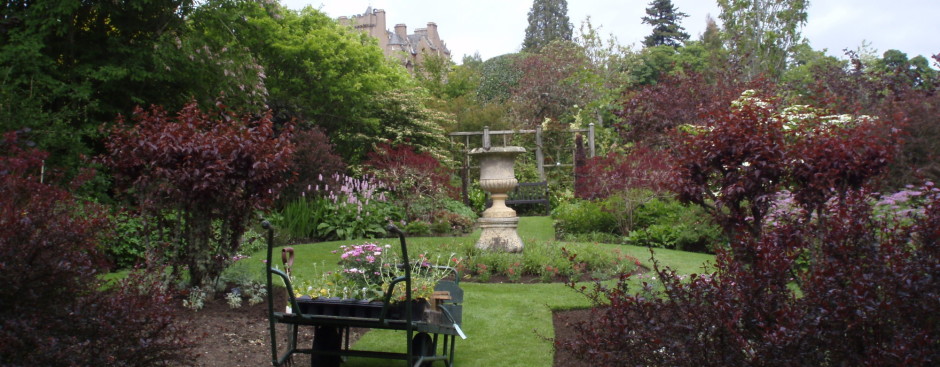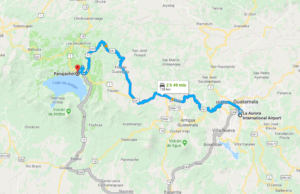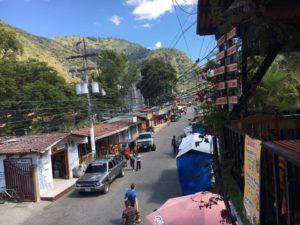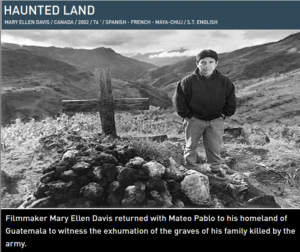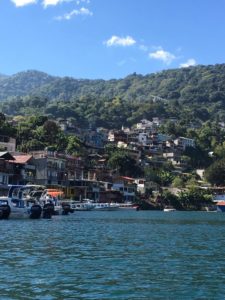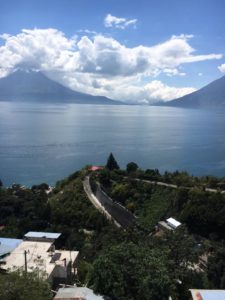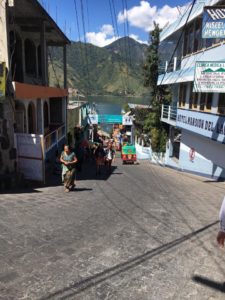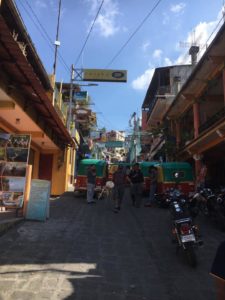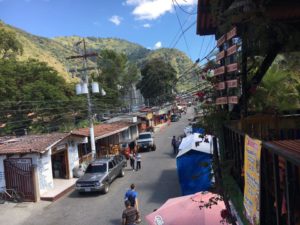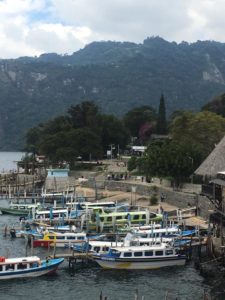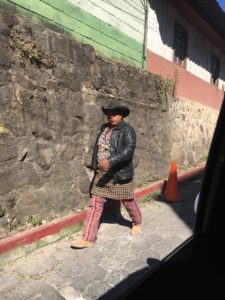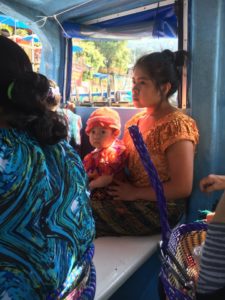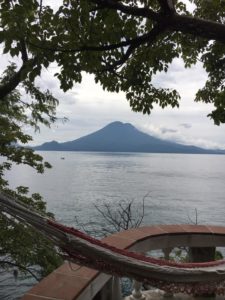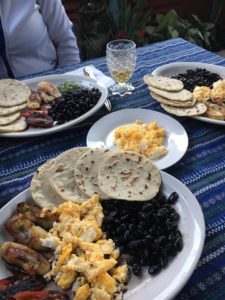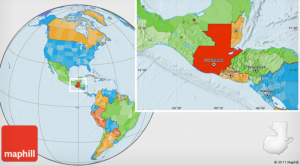 My wife and I both began visiting Spanish speaking countries in our younger days, over 20 years ago, on mission trips. Now, with both of us working in health related fields, we look to continue trips to some of the poorest areas of the western hemisphere in order to potentially support local health initiatives. We also view these under-served parts of the world as frequent vacation destinations – not in the secluded resorts of poor countries, but relatively immersed within the local populations. We enjoy improving our language skills, better understanding local cultures, sharing ideas and observations with native peoples, finding less common paths, dialing down consumption and expense, and ultimately returning home with improved and broadened perspectives.
My wife and I both began visiting Spanish speaking countries in our younger days, over 20 years ago, on mission trips. Now, with both of us working in health related fields, we look to continue trips to some of the poorest areas of the western hemisphere in order to potentially support local health initiatives. We also view these under-served parts of the world as frequent vacation destinations – not in the secluded resorts of poor countries, but relatively immersed within the local populations. We enjoy improving our language skills, better understanding local cultures, sharing ideas and observations with native peoples, finding less common paths, dialing down consumption and expense, and ultimately returning home with improved and broadened perspectives.
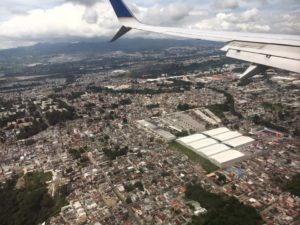 We had never visited Guatemala nor knew much of its history until recent weeks. As I was searching for potential vacation spots in Central America leading up to this recent vacation, I wanted to explore somewhere we’d never been. (We’ve travelled several times to areas of Mexico, Costa Rica, and Honduras.) Other considerations: (1) cost, (2) with only one week available, airport and road travel needed to be relatively smooth for a same-day arrival to our destination, (3) safety – an admittedly subjective judgment that can be aided with some travel and government websites, (4) points of interest for vistas, learning, hiking, exploring.
We had never visited Guatemala nor knew much of its history until recent weeks. As I was searching for potential vacation spots in Central America leading up to this recent vacation, I wanted to explore somewhere we’d never been. (We’ve travelled several times to areas of Mexico, Costa Rica, and Honduras.) Other considerations: (1) cost, (2) with only one week available, airport and road travel needed to be relatively smooth for a same-day arrival to our destination, (3) safety – an admittedly subjective judgment that can be aided with some travel and government websites, (4) points of interest for vistas, learning, hiking, exploring.
Our preference for vacation accommodations is usually a rented house, rather than a hotel. That option tends to be more affordable while offering amenities for cooking at home, as well as being more culturally immersed. I started a few months ago by looking at VRBO.com (vacation rental by owner) offerings in Panama, Nicaragua and Guatemala – countries new to us. While there are many great options (across the gamut of affordable to luxurious), once I hit upon some spots at Lago de Atitlán in western Guatemala, it quickly became a preferred destination. And when we told my Mom about it, she joined up with us for the experience.
 We rented a gated home with lake view in Jaibalito for a week at well under $100/day. We flew into Guatemala City (a 3-hour flight from Houston), had reserved a car at US-based Alamo just outside the airport terminal, and started an adventure. Guatemala City has a population of about 3.5 million people, is well-developed, bustling, and traffic-congested. The primary destination for the day was Panajachel (the town on the northeastern shore of the lake, where we would park the car and take a water taxi to Jaibalito). It is about 140 km, less than 90 miles, from Guatemala City. However, with congestion, mountainous roads, meanderings through small towns and construction, that 90 mile trip took 5 hours. (On return, it took six!) NB: if you decide to do something similar, I highly recommend that you arrange a private shuttle/driver. They are apparently plentiful. You do not need a car for this trip.
We rented a gated home with lake view in Jaibalito for a week at well under $100/day. We flew into Guatemala City (a 3-hour flight from Houston), had reserved a car at US-based Alamo just outside the airport terminal, and started an adventure. Guatemala City has a population of about 3.5 million people, is well-developed, bustling, and traffic-congested. The primary destination for the day was Panajachel (the town on the northeastern shore of the lake, where we would park the car and take a water taxi to Jaibalito). It is about 140 km, less than 90 miles, from Guatemala City. However, with congestion, mountainous roads, meanderings through small towns and construction, that 90 mile trip took 5 hours. (On return, it took six!) NB: if you decide to do something similar, I highly recommend that you arrange a private shuttle/driver. They are apparently plentiful. You do not need a car for this trip.
We arrived to Panajachel after 6pm, and just after dark, but had a destination in mind. Los Cayucos is a marina/parking lot that was recommended by the rental house property manager. With help from a local, self-appointed tour guide on a bicycle (at least his shirt said “tourism”), we found the lot. I had been quoted an approximate price of 30-50 Quetzals ($5-7) per night by the property manager, but on arrival the 24-hour parking attendant wanted 100Q per night. After a little haggling, we settled at 60Q. Then our “tour guide” showed us where to catch a water taxi.
 Usually these run pretty frequently between the 5-6 little towns around the lake at 15-25Q ($2-4 per person), but after dark, you need to find a “private” boat. We ended up paying about 10 times that amount because it was after hours,… we were tourists,… and haggling in the dark in an unfamiliar setting in a foreign country with lots of poor locals standing around watching isn’t the wisest move. Fork it over, and keep moving. (My personal opinion: when traveling in unknown and/or potentially dangerous spots, keep as low a profile as possible and always stay in motion.)
Usually these run pretty frequently between the 5-6 little towns around the lake at 15-25Q ($2-4 per person), but after dark, you need to find a “private” boat. We ended up paying about 10 times that amount because it was after hours,… we were tourists,… and haggling in the dark in an unfamiliar setting in a foreign country with lots of poor locals standing around watching isn’t the wisest move. Fork it over, and keep moving. (My personal opinion: when traveling in unknown and/or potentially dangerous spots, keep as low a profile as possible and always stay in motion.)
Despite some uncertainty (my wife was convinced we were being taken to a drug lord’s house), the 20 minute boat ride was speedy and uneventful. We docked in Jaibalito, found our property manager’s house within 100 yards of the landing, and walked with her to the rental house a few hundred yards away. The house was among the most elaborate structures in the village: 2 story, 3,000 square feet, sitting on about a 1/2 acre of manicured garden, surrounded by a mostly concrete wall, perhaps 20 feet tall at it highest point. Outside the wall were much poorer huts, relatively tightly spaced, made of various makeshift materials, like tin sheets and pieces of wood slab, often with dirt floors and without doors, surrounded by their own fencing of makeshift materials and barbed wire, typically with a constantly-lit wood-burning fire upon which meals are cooked and which at mealtimes can fill the valley with a haze. A minority of the housing in the village looked better established with concrete structures and floors. A few homes looked to be on par with the quality of our rental house: gated, architecturally pleasing, full household amenities (refrigerator, indoor plumbing, gas stove, well-tended yards), tile floors, professionally crafted furniture. These also tended to be owned by ex pats that we met from Germany, Iran and Belgium.
20 minute boat ride was speedy and uneventful. We docked in Jaibalito, found our property manager’s house within 100 yards of the landing, and walked with her to the rental house a few hundred yards away. The house was among the most elaborate structures in the village: 2 story, 3,000 square feet, sitting on about a 1/2 acre of manicured garden, surrounded by a mostly concrete wall, perhaps 20 feet tall at it highest point. Outside the wall were much poorer huts, relatively tightly spaced, made of various makeshift materials, like tin sheets and pieces of wood slab, often with dirt floors and without doors, surrounded by their own fencing of makeshift materials and barbed wire, typically with a constantly-lit wood-burning fire upon which meals are cooked and which at mealtimes can fill the valley with a haze. A minority of the housing in the village looked better established with concrete structures and floors. A few homes looked to be on par with the quality of our rental house: gated, architecturally pleasing, full household amenities (refrigerator, indoor plumbing, gas stove, well-tended yards), tile floors, professionally crafted furniture. These also tended to be owned by ex pats that we met from Germany, Iran and Belgium.
 The town of Jaibalito has a population of about 900 people, lies on the northern lake shore, surrounded on all other sides by mountains, and occupies an area of probably 1 square mile total within this small valley. There is no road access to the town whatsoever. The main lane through the village is a roughly 5-feet wide concrete sidewalk with side trenches for runoff (and potentially some human waste). The only vehicles in the village are two small 3-wheeled, motorized carriages, known as tuk-tuks. There are a few small stores (tiendas) that offer some dried goods, fresh food items and select sundries. Also, there are a few open air restaurants – both locally and ex pat owned. There are also some rooms to rent via hostel, a hotel and perhaps other private options (like our VRBO). Just outside of Jaibalito, within 10 minutes walk are a few other tourist hotels and restaurants. Around the lake’s perimeter are small towns, hotels, resorts, restaurants – some of very high quality and price – all accessible by water taxi.
The town of Jaibalito has a population of about 900 people, lies on the northern lake shore, surrounded on all other sides by mountains, and occupies an area of probably 1 square mile total within this small valley. There is no road access to the town whatsoever. The main lane through the village is a roughly 5-feet wide concrete sidewalk with side trenches for runoff (and potentially some human waste). The only vehicles in the village are two small 3-wheeled, motorized carriages, known as tuk-tuks. There are a few small stores (tiendas) that offer some dried goods, fresh food items and select sundries. Also, there are a few open air restaurants – both locally and ex pat owned. There are also some rooms to rent via hostel, a hotel and perhaps other private options (like our VRBO). Just outside of Jaibalito, within 10 minutes walk are a few other tourist hotels and restaurants. Around the lake’s perimeter are small towns, hotels, resorts, restaurants – some of very high quality and price – all accessible by water taxi.
Throughout our week long stay, we ate and shopped locally, cooked at home some, hiked and 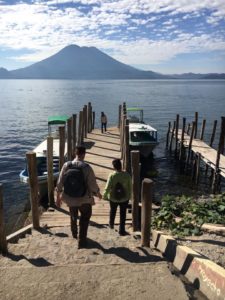 explored several of the lake’s towns, enjoyed the views, read, took advantage of several of the documentary DVDs at the rental house (see below), spoke to the locals and ex pats, and came away with a better education and perspective regarding Guatemala (especially in comparison/contrast with our own lives, culture, traditions, government,….).
explored several of the lake’s towns, enjoyed the views, read, took advantage of several of the documentary DVDs at the rental house (see below), spoke to the locals and ex pats, and came away with a better education and perspective regarding Guatemala (especially in comparison/contrast with our own lives, culture, traditions, government,….).
 In preparation for our trip, I read Bitter Fruit: The Story of the American Coup in Guatemala in order to better understand that country’s 40-year civil war that ended in the 1990s, its US-supported death squads, the genocide (I don’t think that’s an excessive term) of 200,000+ Mayan natives, and their very tenuous democracy that many have died attempting to establish amidst purposefully destabilizing and powerful external forces. (If you choose to read this well-documented, Harvard University associated book, you will never see your government – or likely any government – in the same light. As a corollary, you might also explore the 1953 CIA-led coup d’etat which overthrew Iranian Prime Minister Mossadegh.)
In preparation for our trip, I read Bitter Fruit: The Story of the American Coup in Guatemala in order to better understand that country’s 40-year civil war that ended in the 1990s, its US-supported death squads, the genocide (I don’t think that’s an excessive term) of 200,000+ Mayan natives, and their very tenuous democracy that many have died attempting to establish amidst purposefully destabilizing and powerful external forces. (If you choose to read this well-documented, Harvard University associated book, you will never see your government – or likely any government – in the same light. As a corollary, you might also explore the 1953 CIA-led coup d’etat which overthrew Iranian Prime Minister Mossadegh.)
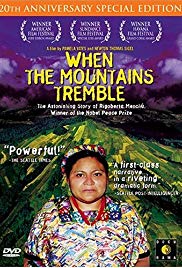 Additionally, we watched the documentaries: When the Mountains Tremble (excerpted from Wikipedia’s description): “a 1983 documentary film … about the war between the Guatemalan Military and the Mayan Indigenous population of Guatemala.[2][3] …Footage from this film was used as forensic evidence in the Guatemalan court for crimes against humanity, in the genocide case against Efraín Ríos Montt.[4][5] The film centers on the experiences of Nobel Prize winner Rigoberta Menchú, a Quiché indigenous woman who won the Nobel Peace Prize in 1992….”
Additionally, we watched the documentaries: When the Mountains Tremble (excerpted from Wikipedia’s description): “a 1983 documentary film … about the war between the Guatemalan Military and the Mayan Indigenous population of Guatemala.[2][3] …Footage from this film was used as forensic evidence in the Guatemalan court for crimes against humanity, in the genocide case against Efraín Ríos Montt.[4][5] The film centers on the experiences of Nobel Prize winner Rigoberta Menchú, a Quiché indigenous woman who won the Nobel Peace Prize in 1992….”
Another documentary at the house was Haunted Land: “Two paths cross on a descent into Guatemala’s past: that of Mateo Pablo, a Maya survivor of one of many massacres committed by local government troops, and Daniel Hernández-Salazar, a concerned Guatemalan artist and photographer. Together they travel to a remote site in the highlands where the community of Petanac once stood. The bones found there by archaeologists tell a mute story of agony.”
In summary, it was a great vacation: educational, fun, at once exhausting but rejuvenating of mind/spirit/perspective. The big lesson – take the shuttle.
